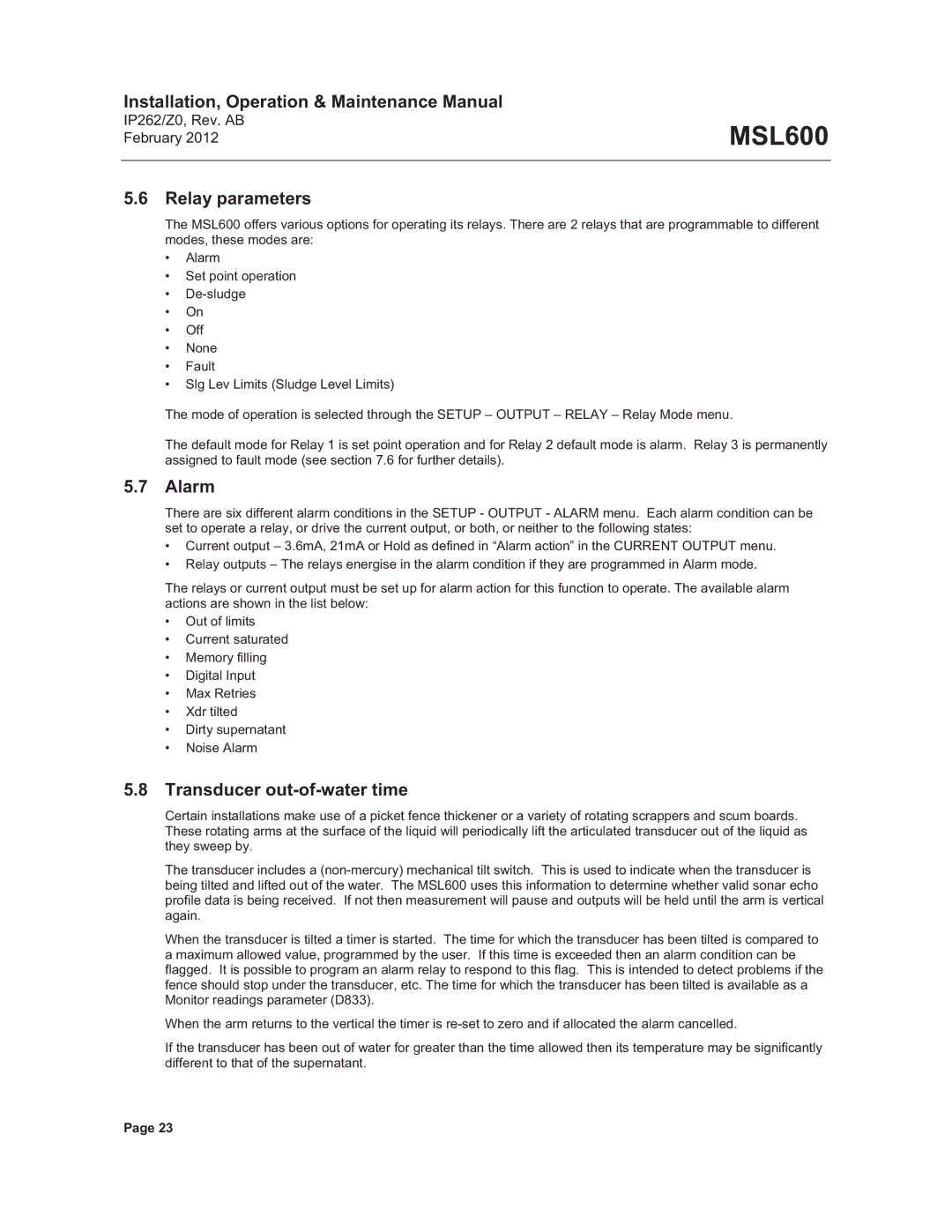Installation, Operation & Maintenance Manual
IP262/Z0, Rev. AB
February 2012 | MSL600 |
5.6 Relay parameters
The MSL600 offers various options for operating its relays. There are 2 relays that are programmable to different modes, these modes are:
•Alarm
•Set point operation
•
•On
•Off
•None
•Fault
•Slg Lev Limits (Sludge Level Limits)
The mode of operation is selected through the SETUP – OUTPUT – RELAY – Relay Mode menu.
The default mode for Relay 1 is set point operation and for Relay 2 default mode is alarm. Relay 3 is permanently assigned to fault mode (see section 7.6 for further details).
5.7 Alarm
There are six different alarm conditions in the SETUP - OUTPUT - ALARM menu. Each alarm condition can be set to operate a relay, or drive the current output, or both, or neither to the following states:
•Current output – 3.6mA, 21mA or Hold as defined in “Alarm action” in the CURRENT OUTPUT menu.
•Relay outputs – The relays energise in the alarm condition if they are programmed in Alarm mode.
The relays or current output must be set up for alarm action for this function to operate. The available alarm actions are shown in the list below:
•Out of limits
•Current saturated
•Memory filling
•Digital Input
•Max Retries
•Xdr tilted
•Dirty supernatant
•Noise Alarm
5.8Transducer out-of-water time
Certain installations make use of a picket fence thickener or a variety of rotating scrappers and scum boards. These rotating arms at the surface of the liquid will periodically lift the articulated transducer out of the liquid as they sweep by.
The transducer includes a
When the transducer is tilted a timer is started. The time for which the transducer has been tilted is compared to a maximum allowed value, programmed by the user. If this time is exceeded then an alarm condition can be flagged. It is possible to program an alarm relay to respond to this flag. This is intended to detect problems if the fence should stop under the transducer, etc. The time for which the transducer has been tilted is available as a Monitor readings parameter (D833).
When the arm returns to the vertical the timer is
If the transducer has been out of water for greater than the time allowed then its temperature may be significantly different to that of the supernatant.
Page 23
